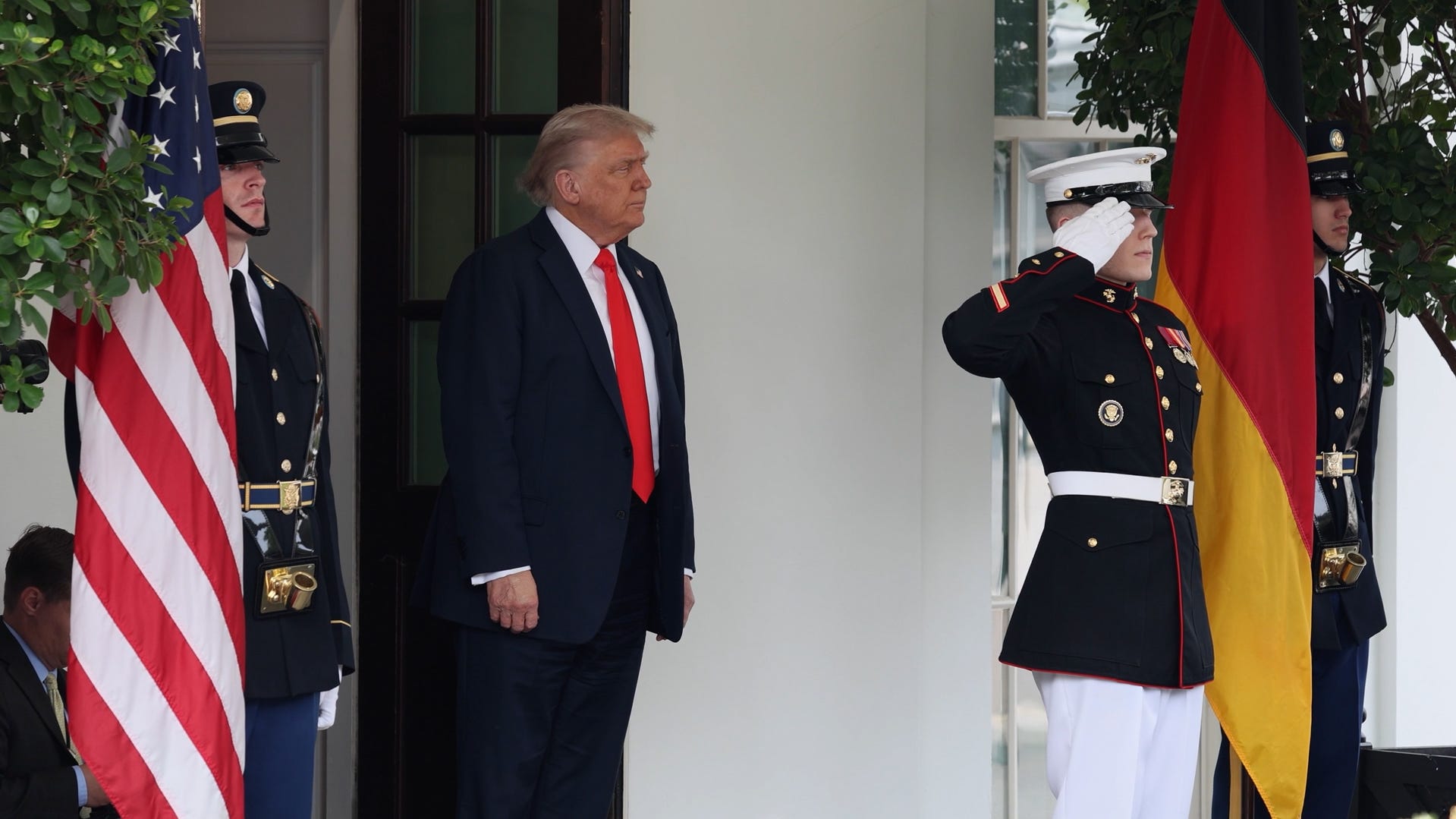Trump says trade deal with China is 'done;' aides tout 'framework' deal
The agreement setting tariffs, and opening door to Chinese college students came after Trump met with Xi Jinping to resolve the tariff dispute that nearly halted trade between the two countries.

- Trump announced the U.S. could collect 55% tariffs on Chinese imports and China would collect 10% tariffs on U.S. imports.
- Chinese students would be allowed to attend U.S. colleges and universities, Trump said.
- China will supply rare earths that are key to manufacturing technology, Trump said.
WASHINGTON – President Donald Trump and Chinese officials announced they have agreed to a framework for a trade deal between the two countries, setting tariffs, allowing students to attend U.S. universities and easing restrictions on trade in rare earths.
Trump announced on social media June 11, “Our deal with China is done.” He said the United States would collect 55% tariffs on Chinese imports and China would collect 10% on U.S. imports.
Trump said Chinese students would be allowed to attend U.S. colleges and universities, which he said “has always been good with me.” And China will supply rare earths that are key to manufacturing technology, he said.
Aides to Trump and Chinese leader Xi Jinping were more tentative in their announcements. China's Vice Commerce Minister Li Chenggang said a trade framework had been reached in principle and it would be shared with the two leaders.
Treasury Secretary Scott Bessent said China, which controls 30% of worldwide manufacturing, agreed to “stabilize the economic relationship between our two countries” and make it more balanced.
“China has a singular opportunity to stabilize its economy by shifting away from excess production and toward greater consumption," Bessent told the House Ways and Means Committee on June 11. "But the country needs to be a reliable partner in trade negotiations.”
"I believe after our talks in London, they will," Bessent added, after returning overnight from the trade talks.
The announcement came after two days of intense negotiations in London, seeking to resolve a near halt in trade between the countries after Trump imposed 145% tariffs on Chinese imports. Trump's tariffs roiled global markets and cost companies tens of billions of dollars in lost sales and higher costs.
U.S. stock futures were lower while investors were awaiting details of a U.S.-China trade deal. Futures linked to the blue-chip Dow Jones Industrial Average fell 0.19%, while broad S&P 500 futures dropped 0.20% and tech-heavy Nasdaq futures slipped 0.20%.
Commerce Secretary Howard Lutnick said the deal put “meat on the bones” of a previous agreement reached in Geneva. But that deal had faltered over China’s curbs on mineral exports, which are key to the computer software and aircraft industries.
Lutnick said the restrictions on rare earth minerals and magnets were resolved “in a balanced way” but declined to divulge details.
What the Trump administration means for the world: Sign up for Paste BN's On Politics newsletter.
China’s vice minister of commerce, Li Chenggang, said the two sides agreed in principle to what Trump and Jinping had discussed in a rare phone call on June 5.
“Our communication is very professional, in-depth and candid. In principle, both sides agreed on implementing the consensus reached by the two heads of state on June 5 in the phone call and the Geneva talks,” Chenggang told reporters.
Lutnick said the agreement was reached “because we both have our presidents pushing us to make sure that we take care of our respective sides.”
The World Bank on June 10 slashed its global growth forecast for 2025 by four-tenths of a percentage point to 2.3%, saying higher tariffs and heightened uncertainty posed a "significant headwind" for nearly all economies.
The two sides left Geneva with fundamentally different views of the terms of that agreement and needed to be more specific on required actions, said Josh Lipsky, senior director of the Atlantic Council's GeoEconomics Center in Washington, D.C.
"They are back to square one, but that's much better than square zero," Lipsky added.
Global stocks have recovered their hefty losses after Trump's April "Liberation Day" tariff announcement and are now near record highs.
"The devil will be in the details, but the lack of reaction suggests this outcome was fully expected," said Chris Weston, head of research at Pepperstone, a stock-trading company in Melbourne, Australia.
"The details matter, especially around the degree of rare earths bound for the United States, and the subsequent freedom for U.S.-produced chips to head east, but, for now, as long as the headlines of talks between the two parties remain constructive, risk assets should remain supported."
China holds a near-monopoly on rare earth magnets, a crucial component in electric vehicle motors, and its decision in April to suspend exports of a wide range of critical minerals and magnets upended global supply chains.
In May, the United States responded by halting shipments of semiconductor design software and chemicals and aviation equipment, revoking export licenses that had been previously issued.
Contributing: Reuters